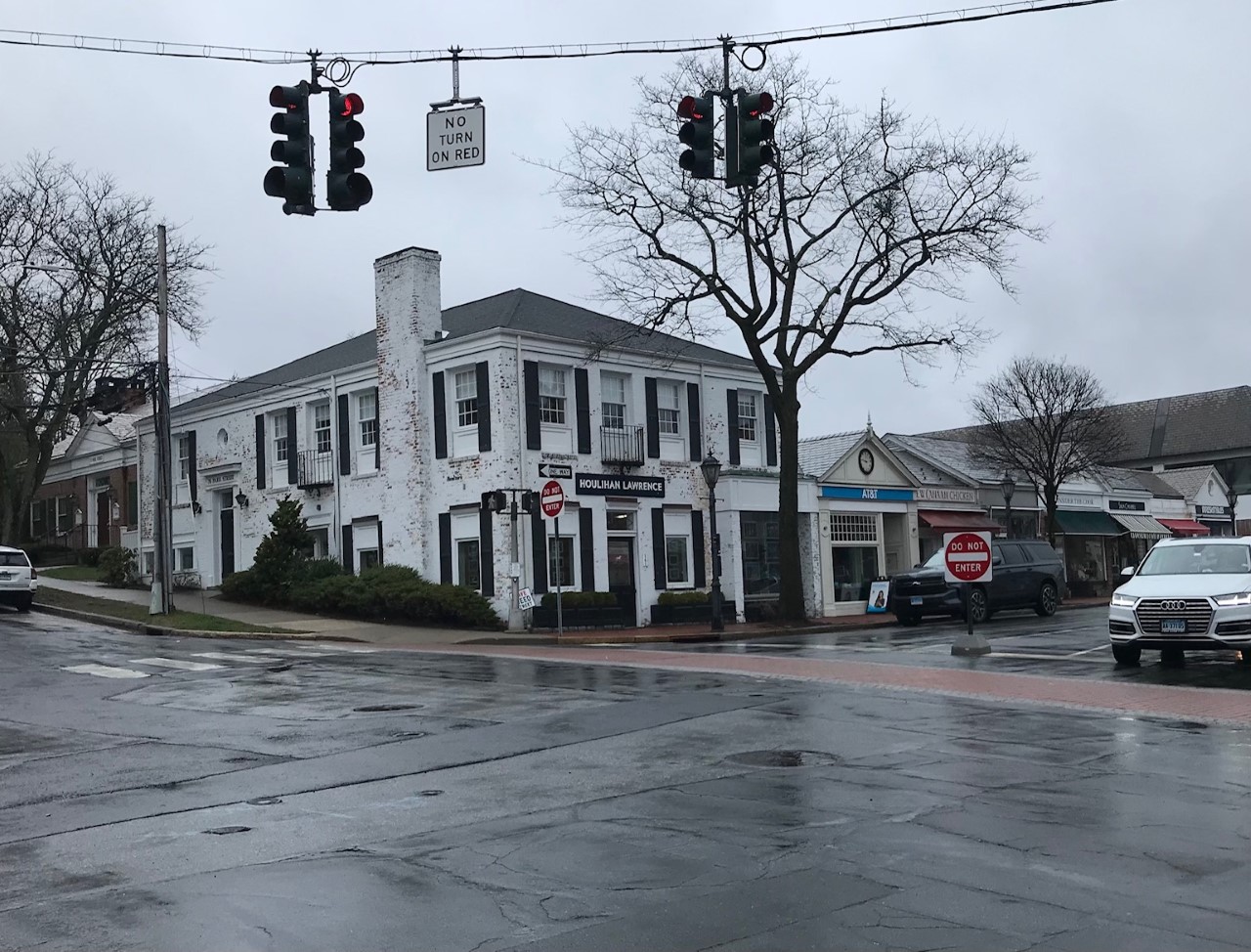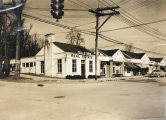New Canaan Now & Then: The John Brotherhood Company
The John Brotherhood Company, Inc. was founded in 1926 by John Brotherhood on the northeast corner of Park and Elm Streets. The original building was a simple wooden structure heated by a Franklin stove.
When the firm outgrew this building, it was moved to the opposite side of Elm Street where it stood next to Franco’s for a number of years. The building was not there for long though, and was later moved to the New Canaan Nature Center (although it no longer appears to be there.)
The single story brick building, pictured above in 1944, had been built in 1936. A second floor was added in 1960.
John Brotherhood was instrumental in developing New Canaan into what it is today. When Brotherhood first set up his business, Elm Street was unrecognizable. The north side of the street was mostly empty, the south side was a tumble of various stores, and Elm Street was known as Railroad Avenue. This began to change in 1929 when John Brotherhood helped to establish the Village Improvement Company. Its goal was to develop Elm Street into an attractive shopping district.
The company bought up all the property on the south side of Elm from Park Street to South Avenue. The company was successful up until 1932 when the Great Depression forced it to dissolve. However, John Brotherhood and Stanton Griffis, who was later appointed the U.S. Ambassador to Spain, Argentina, Egypt and Poland, stepped in and bought the remaining undeveloped properties.
By 1936, the south side of Elm Street resembled what it is today. That same year, thanks to a push in the Advertiser from John Brotherhood and founder of the paper John E. Hersam, Railroad Ave was renamed to Elm Street. The north side of the street would be developed by other developers, but they chose to keep the colonial style of architecture that Brotherhood started.
John Brotherhood was instrumental in developing the rest of New Canaan as well. He was the first broker in New Canaan to start to subdivide the various large estates that were scattered throughout town. Thanks to this, Brotherhood laid out Gerrish Lane, Turtleback Road, Louise’s Lane, Country Club Road, Toby’s Lane, Rippowam Lane, Logan Road, Jonathan Road, and Turtleback Road East and West. Selling homes during the Depression and WWII was a challenge, so Brotherhood diversified his business. He began to raise livestock and poultry on the land and sold the meat, chickens, and eggs.
Brotherhood’s son also recounted that during this time the family lived in 13 different homes. Brotherhood would invite a client back to his house for drinks to discuss what kind of house they wanted. Eventually, the client would say something along the lines of “I’d like something like this” and Brotherhood would respond “Name your price.”
In 1948 Stuart Higley joined the firm. Two years later, he became director, and the firm was renamed Brotherhood & Higley. It became Houlihan Lawrence in 2015 when Brotherhood & Higley joined Houlihan Lawerence’s affiliate program.
New Canaan Now & Then” is presented in partnership with the New Canaan Museum & Historical Society.



Thank you for this glimpse of history, which will be added to touring clients around town.
The original building was actually moved to my grandparents property (the red brick home next to the nature center) and it is still there today
Thank you for that Katherine.